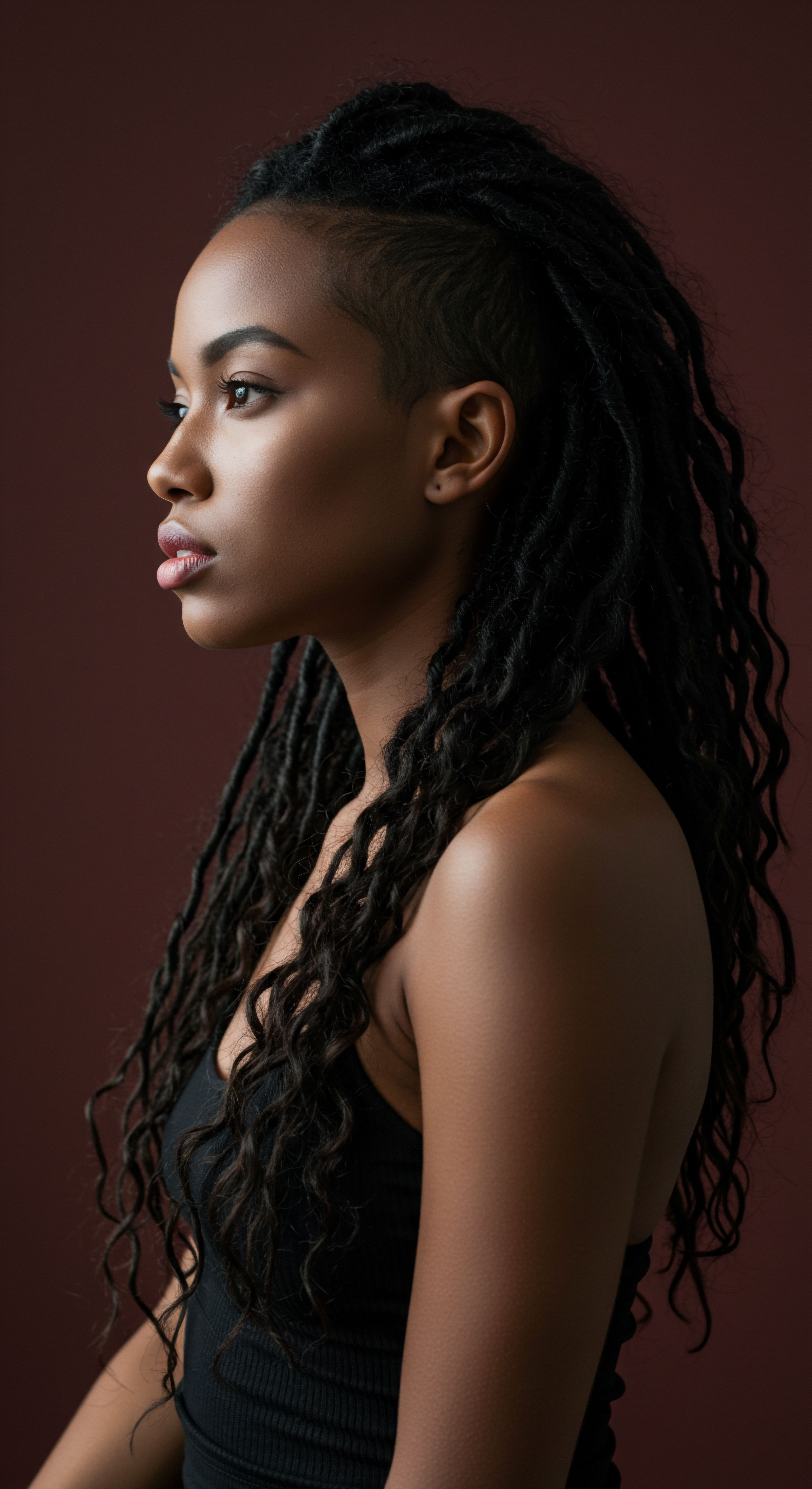
Roots
When we consider the stories held within our hair, we often speak of heritage, of lineage, of quiet strength passed down through generations. Yet, few truly pause to consider how profoundly such strands once spoke of one’s standing in the ancient world. In the sun-drenched lands of ancient Egypt, the arrangement and condition of one’s hair transcended simple aesthetics; it was a visible declaration, a nuanced language understood by all.
From the very earliest dynasties, long before the grand pyramids pierced the sky, the Egyptians recognized hair as a powerful medium, capable of conveying everything from spiritual purity to earthly dominance. This deep connection to personal presentation was not a mere passing fancy; it was fundamental to their societal structure, a silent yet potent code.
The dry climate of Egypt, so often a preserver of ancient secrets, offers us a unique window into these practices. Archaeologists have unearthed not only the tools used for grooming but also remarkably preserved hair on mummies, providing direct evidence of the care and artistry involved. These findings reveal a people who understood the symbolic weight of their appearance, particularly their hair, as an extension of their very being, both in this life and the one to come.
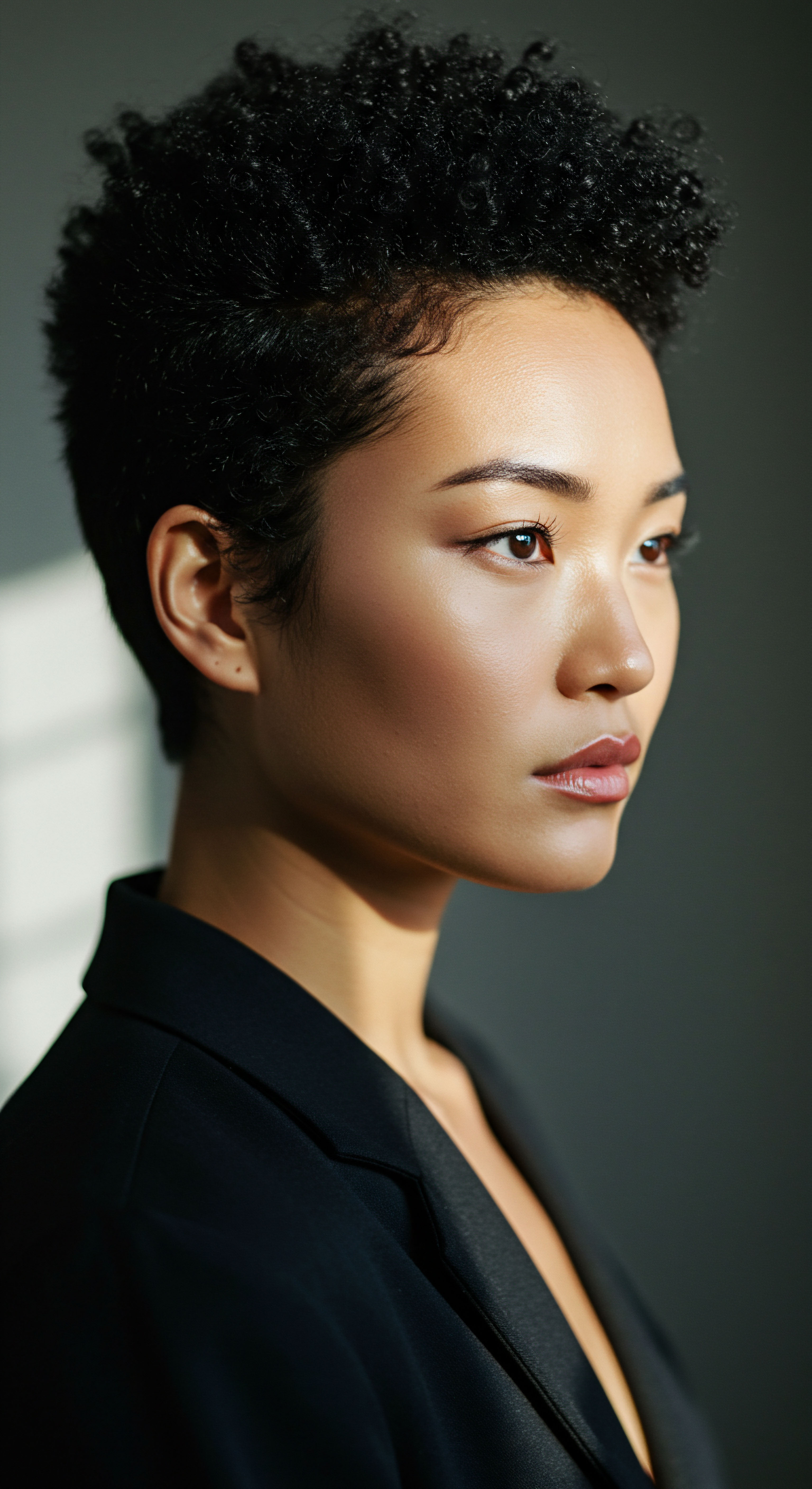
The Earliest Expressions of Status
From the Protodynastic period, a clear link began to form between an individual’s hair and their place within the emerging social order. As centralized authority grew, so too did a codified system of hairstyles. These visual cues allowed for instant recognition of one’s position. Early depictions, often found in funerary contexts, show a spectrum of styles that subtly yet definitively marked class, age, and gender.
In ancient Egypt, hair acted as a clear, visible marker of an individual’s social standing and identity.
For men, particularly in the Old Kingdom, shorter hair or shaved heads were common. However, as society became more stratified, modifications to short hair, and the adoption of mid-length or even shoulder-length styles, became more widespread among certain groups. Longer hair, for some, began to symbolize power and even divinity, a significant departure from earlier, more practical choices.
Women, on the other hand, consistently wore long hair across all social strata throughout most periods, with variations appearing in how it was styled and adorned. This consistent length for women may have related to perceptions of them as mothers, linked to procreation and fecundity.

Hair Length and Societal Layers
The length of one’s hair often served as a straightforward indicator of social standing. For the working classes, especially those toiling outdoors under the intense Egyptian sun, short or completely shaved hair was a practical choice, helping to manage heat and maintain cleanliness. Longer hair, requiring consistent care and protection from the elements, became a luxury. Only those with the means to employ servants for daily grooming and styling could maintain extensive coiffures, signaling their affluence and elevated position.
This division was not arbitrary; it was a reflection of daily life. A laborer, constantly exposed to dust and heat, would find long, unkempt hair a hindrance and a magnet for pests. A member of the elite, however, could reside in shaded courtyards, attended by staff, allowing for the cultivation of elaborate styles that were both impractical and inaccessible for the majority. This stark contrast solidified hair as a visual shorthand for one’s place in the societal pyramid.
| Social Tier Royalty and High Officials |
| Hair Practices Elaborate wigs, human hair extensions, intricate adornments, often shaved natural heads. |
| Associated Meanings Wealth, purity, divine connection, ultimate authority. |
| Social Tier Priests |
| Hair Practices Shaved heads and bodies. |
| Associated Meanings Ritual purity, dedication to deities, cleanliness. |
| Social Tier Upper and Middle Class |
| Hair Practices Wigs (less elaborate than royalty), styled natural hair, hair oil use. |
| Associated Meanings Status, personal care, social standing. |
| Social Tier Working Class |
| Hair Practices Short, natural hair, often shaved for practicality. |
| Associated Meanings Hygiene, practicality, limited resources. |
| Social Tier Children (all classes) |
| Hair Practices Shaved heads with a single 'sidelock of youth' until puberty. |
| Associated Meanings Age marker, childhood, potential ritual protection. |
| Social Tier These distinctions were largely visible, allowing for immediate social identification. |

How Did Cleanliness Influence Hair Presentation?
Beyond outward display, a profound connection existed between hair practices and hygiene. The arid Egyptian climate, while preserving, also presented challenges for maintaining personal cleanliness. Lice and other pests were a constant concern.
For this reason, many Egyptians, especially those of higher standing, opted to shave their natural hair or keep it very short. This allowed for easier maintenance and reduced the likelihood of infestations.
Wigs then served a dual purpose ❉ they offered a hygienic alternative to natural hair, shielding the scalp from the sun while allowing for ventilation through their mesh foundations, and simultaneously provided a canvas for elaborate styling that denoted status. Priests, in particular, adhered to strict regimens of shaving all body hair to maintain a state of ritual purity essential for their duties. This practice underscores that the meticulous attention to hair, or its absence, was deeply embedded in their understanding of health, spiritual cleanliness, and social decorum.

Ritual
Stepping into the world of ancient Egyptian hair rituals reveals a realm where personal grooming was far more than a daily chore. It was a practice imbued with purpose, a careful choreography of care that reflected societal norms, spiritual beliefs, and the very aspirations of a people. For those who sought to present themselves with grace and intention, understanding the techniques and tools that shaped their outward appearance was paramount. These were not simply acts of vanity; they were expressions of identity, protection, and a connection to the cycles of life and beyond.
The daily routine of hair care for the elite was a testament to their privileged position. They had access to skilled professionals, specialized tools, and precious ingredients. While commoners relied on simpler methods, the universal drive for cleanliness and an appealing appearance was present across all societal layers, though expressed differently.

The Significance of Wigs and Extensions
Wigs stand as perhaps the most recognizable symbol of ancient Egyptian hair practices, particularly for the upper echelons of society. Crafted primarily from human hair, though sometimes supplemented with plant fibers or even sheep’s wool for volume, these hairpieces were a significant investment. Their creation was time-consuming, demanding considerable skill from wigmakers, making them a costly item largely reserved for the wealthy. The more wigs an individual owned, and the more elaborate their construction, the higher their perceived standing.
Wigs in ancient Egypt functioned as both a hygienic solution and a potent symbol of social rank and wealth.
The function of wigs extended beyond mere aesthetics. They offered practical benefits, protecting the wearer’s shaven or cropped scalp from the harsh sun and reducing the likelihood of lice infestations, a constant concern in the warm climate. This combination of practicality and prestige made wigs an indispensable element of elite attire, worn both in daily life and for significant ceremonial occasions.
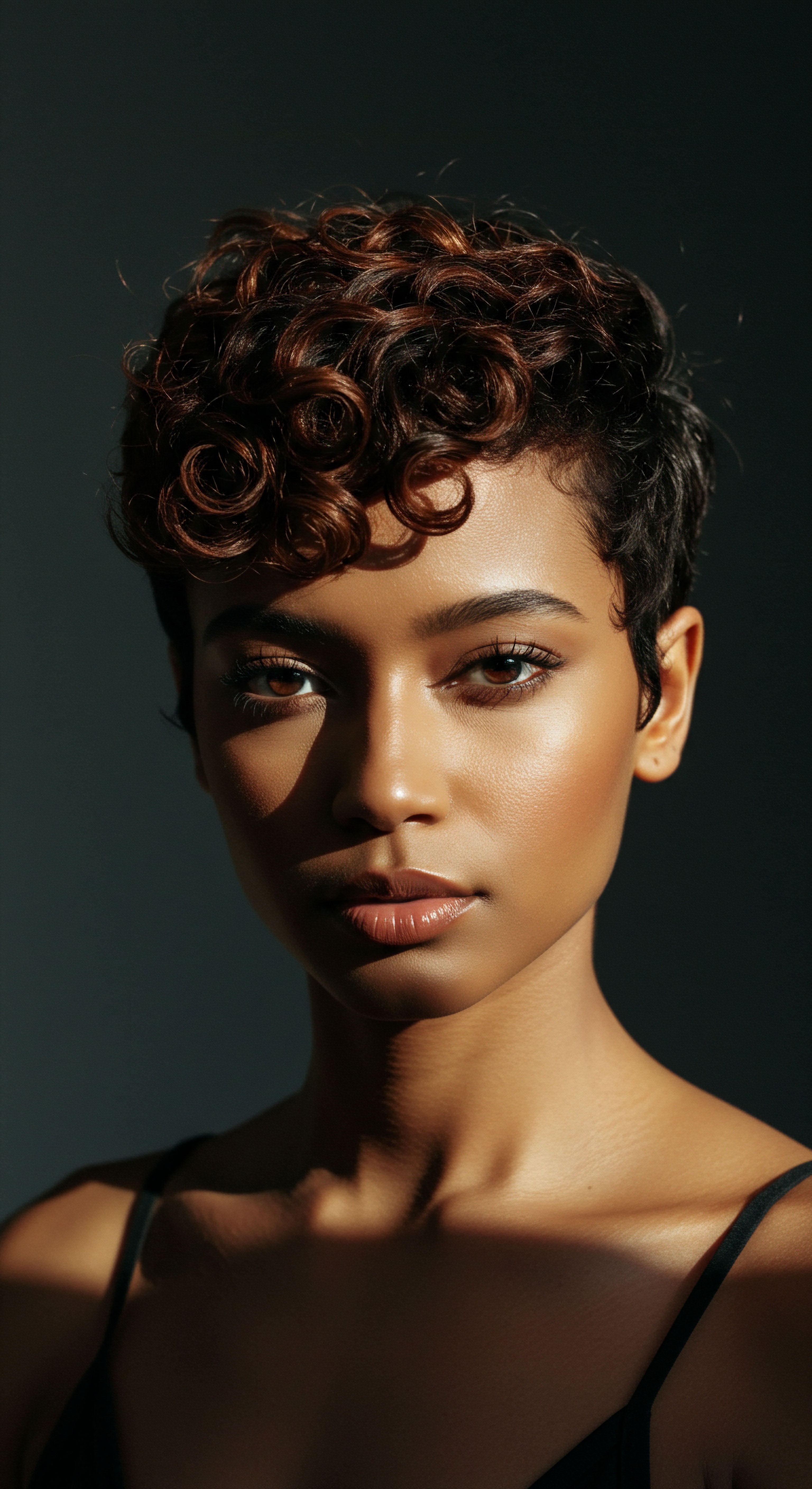
How Did Elaborate Wigs Become Status Symbols?
The artistry involved in wig-making was remarkable. Wigmakers used substances like beeswax and animal fat to set and maintain intricate styles, giving them a lustrous sheen. Some wigs were dyed vibrant blues, reds, or greens and adorned with precious stones and jewelry, further elevating their visual impact. This dedication to complex and visually striking hairpieces meant that the more ornate the wig, the clearer the message of the wearer’s elevated standing.
Consider the account of Queen Isimkheb, a priestess from around 900 BC, whose wig, now preserved in the Cairo Museum, was so massive and heavy that she reportedly needed assistance from her attendants simply to stand. This extreme example underscores the lengths to which the elite would go to display their status through hair, embracing styles that were physically demanding to wear, yet undeniably communicated immense wealth and social prominence. The wig, made of brown human hair held together by beeswax, serves as a tangible representation of this ancient pursuit of grandeur.
- Wigs ❉ Served as a primary visual marker of wealth and social position, especially for the elite, due to their costly production and maintenance.
- Hair Extensions ❉ Used to add volume and length to natural hair, or to wigs, with early examples dating back to 3400 BC.
- Hair Oils ❉ Castor, almond, moringa, and coconut oils were used for conditioning, cleansing, and styling, providing nourishment and a glossy sheen.
- Henna ❉ A natural dye used to color hair, cover gray strands, and condition, valued for both its aesthetic and protective properties.
- Beeswax and Animal Fat ❉ Applied to set styles and add luster, as evidenced by analysis of mummified hair.
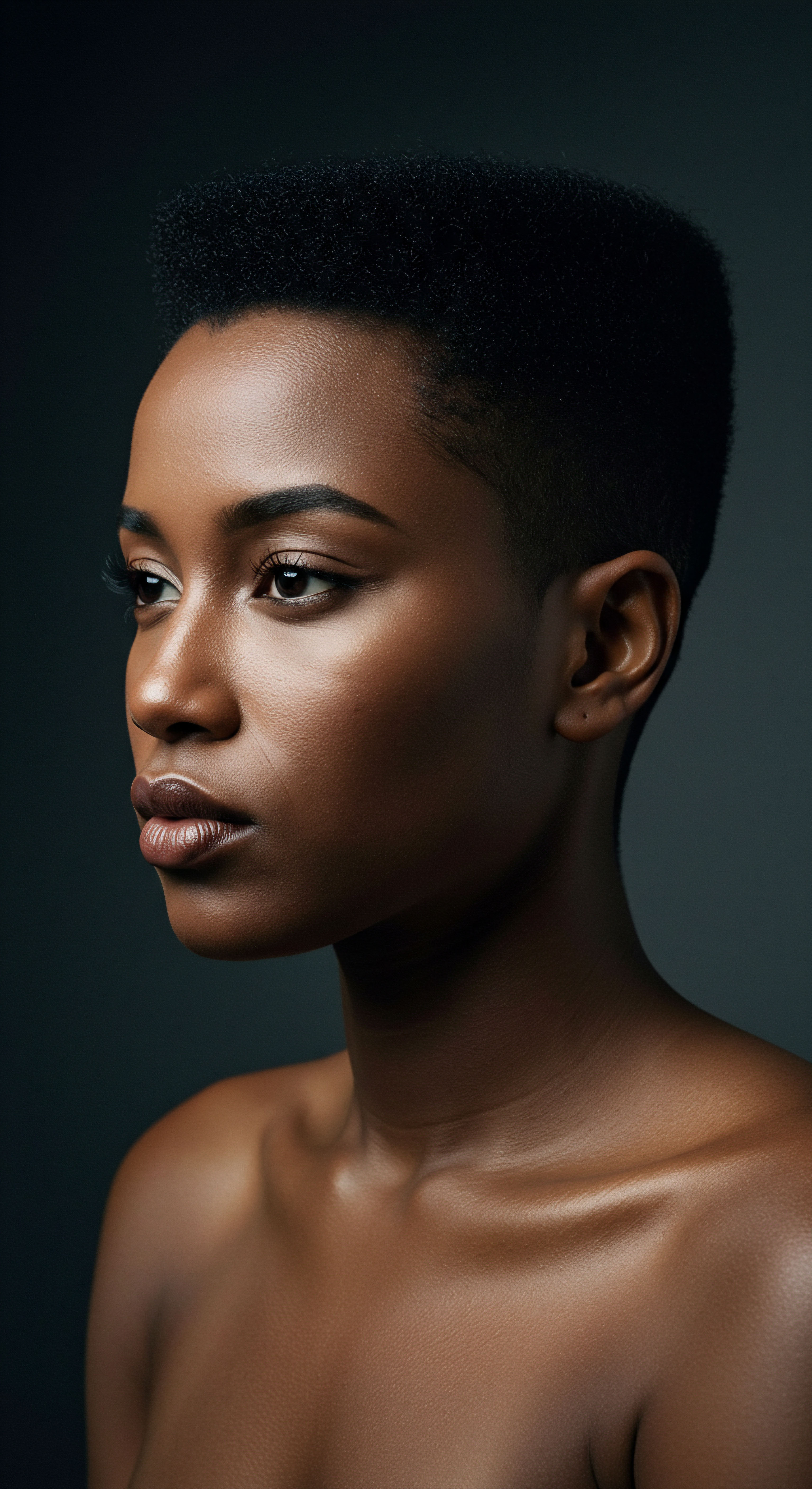
What Grooming Tools Were Essential for the Elite?
The care of hair and wigs among the royal and upper classes was a meticulous affair, overseen by specialized professionals. Barbers and hairdressers held respected positions, particularly those attached to palace staff. As early as the 3rd Dynasty (27th century BCE), evidence of copper razors has been found, suggesting the presence of professional groomers from very early times.
These skilled individuals performed a variety of tasks, from shaving heads and bodies to crafting and maintaining elaborate wigs. They used a range of tools, including bronze, copper, and flint razors, tweezers, and combs made from wood, bone, or ivory, often adorned with intricate carvings. The “Overseer of Royal Hairdressers” and the “Director of Palace Barbers” were titles held by individuals responsible for the meticulous grooming of the king, highlighting the ceremonial importance of such roles. These scenes, often depicted in tomb art, show elite women having their hair dressed by maidservants, a clear sign of their privileged daily life.
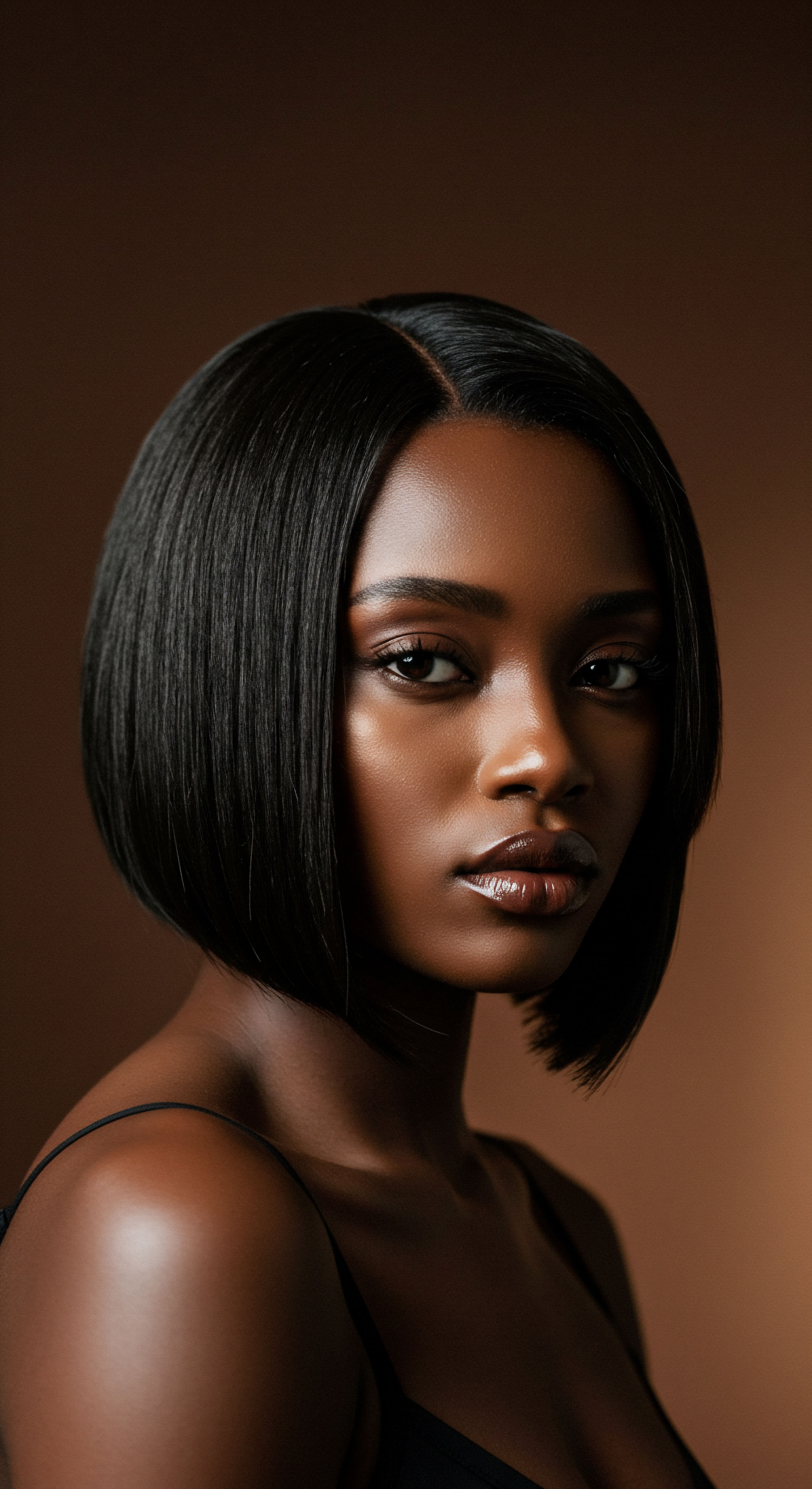
Relay
To truly grasp the profound connection between ancient Egyptian hair practices and social standing, one must look beyond the surface of a styled wig or a shaven head. The story is one of complex interplay, where personal appearance was not simply a reflection of wealth, but a deliberate statement of power, a spiritual conduit, and a deeply embedded cultural code that reinforced the very fabric of society. The nuanced messages conveyed through hair transcended the individual, speaking volumes about the collective identity and the established order.
The visual evidence from tombs, statues, and reliefs provides an invaluable archive. These artistic representations, often commissioned by high-ranking officials, present idealized versions of their families, where hair serves as a key signifier of gender, age, and social position. This visual consistency across various periods points to a deliberate system of communication, where hairstyles were not accidental but carefully constructed elements of public persona.

How Did Hair Symbolize Power and Identity Beyond Wealth?
Hair in ancient Egypt held deep symbolic meaning, extending into the realms of vitality, life essence, and even control. Across ancient Mediterranean cultures, hair was seen as something intrinsically linked to one’s life force; it continued to grow even after death, lending it a powerful, almost mystical quality. For Egyptians, this meant hair could represent individual strength and energy.
The depiction of pharaohs grasping their enemies by the hair, a common motif, powerfully symbolized their dominance and the complete submission of their foes. This act was a visual metaphor for seizing control over another’s very essence.
The choice of hair, or its absence, was therefore not just about luxury; it was about projecting a specific identity within a highly stratified society. Elite men, for example, wore wigs that were above shoulder level, with the most distinguished featuring elaborate arrangements of strands, curls, or braids. This practice allowed them to project an image of command and control, even over the very materials of their appearance, as the human hair for these wigs often came from others.
The social stratification evident in hair practices is further underscored by the fact that priests and household servants were frequently depicted with shaven heads. This less-haired appearance could signify a subservient status, whether to a deity or a mortal master, reinforcing the idea that a lack of hair, in certain contexts, indicated a position of service or humility.
Hair in ancient Egypt was a powerful, symbolic medium, communicating social hierarchy, spiritual purity, and political dominance.

What Insights do Archaeological Findings Offer on Hair and Status?
Archaeological discoveries provide tangible evidence of these complex relationships. Excavations at Tell el-Amarna, the capital city built by Pharaoh Akhenaten, have yielded human remains with remarkably preserved elaborate hairstyles. One particular finding revealed a woman with more than 70 hair extensions, meticulously fastened in different layers and heights.
Some of these extensions were of varying colors, suggesting they were sourced from multiple individuals. This discovery not only speaks to the extraordinary lengths taken for aesthetic purposes but also hints at the potential value and trade of human hair within the Egyptian barter economy, a commodity that only the wealthy could afford.
The presence of fat-based styling products on these ancient strands further deepens our comprehension. A study examining hair samples from 18 mummies, dating back approximately 3,500 years, utilized microscopy and gas chromatography-mass spectrometry. This analysis revealed that nine of the mummies had their hair coated with a substance containing long-chain fatty acids, like palmitic acid.
Researchers surmise this fat-based coating served as a styling product during life, not merely a part of the mummification process. This scientific detail confirms that sophisticated hair care was a living practice, extending beyond funerary preparations, and was a component of maintaining the high-status appearances seen in art.
- Archaeological Evidence ❉ Preserved hair on mummies and hair artifacts directly reveal ancient styling techniques and products.
- Artistic Depictions ❉ Tomb paintings, reliefs, and statues offer visual records of hairstyles, wigs, and grooming rituals across different social classes.
- Textual Records ❉ Though less common for daily hair practices, some papyri and inscriptions provide context on hygiene, ritual purity, and professional roles like barbers.
The examination of funerary objects, such as decorative combs made of ivory with animal motifs dating as early as 3900 BCE, provides additional context. These items, placed in tombs, underscore the belief that beauty and appearance remained important even in the afterlife, serving a spiritual function linked to fertility and regeneration. The continuity of these practices, from daily life to eternal rest, highlights how deeply intertwined hair was with the Egyptian concept of self and social order.

Reflection
As we step back from the intricate world of ancient Egyptian hair, a quiet understanding settles. The delicate curves of a wig, the purposeful sweep of a shaven head, the carefully braided sidelock of a child – each element held a voice, speaking of identity, aspiration, and the very structure of a civilization. These were not simply choices of personal adornment; they were deeply felt expressions of one’s place in the cosmic and social order, a quiet symphony of personal care and public declaration. The legacy of these practices reminds us that hair, in its countless forms and textures, has always held a profound power, capable of reflecting not just beauty, but the complex truths of human connection and societal design.
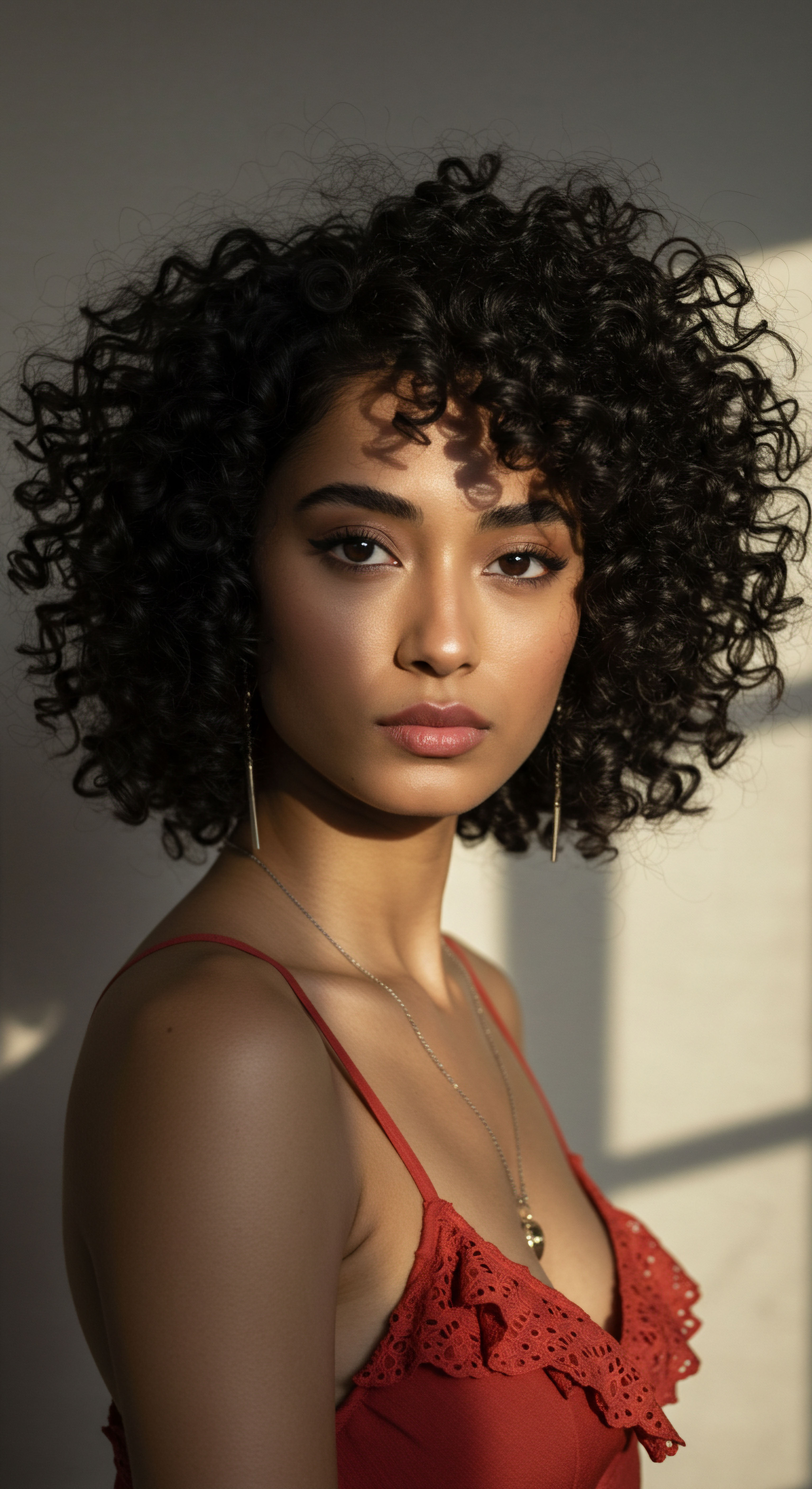
References
- Fletcher, Joann. 1995. Ancient Egyptian Hair ❉ A Study of its Construction, Use and Symbolism. Ph.D. thesis, University of Manchester.
- Fletcher, Joann and Salamone, Franca. 2016. An Ancient Egyptian Wig ❉ Construction and Reconstruction. Internet Archaeology 42.
- Grajetzki, Wolfram. 2003. Burial Customs in Ancient Egypt ❉ Life in Death for Rich and Poor. Duckworth.
- Robins, Gay. 1994. Proportion and Style in Ancient Egyptian Art. University of Texas Press.
- Tassie, Geoffrey J. 2011. The Social and Ritual Contextualisation of Ancient Egyptian Hair and Hairstyles from the Protodynastic to the End of the Old Kingdom. Ph.D. thesis, University College London.
- Herodotus. The Histories. Translated by Aubrey de Selincourt. Penguin Classics.
- Lucas, Alfred. 1930. Ancient Egyptian Materials and Industries. Edward Arnold & Co.
- Budge, E. A. Wallis, and John Romer. 2008. The Egyptian Book of the Dead. Penguin Classics.
- Speidel, Michael P. 1990. Roman Army Studies, Volume 2. Franz Steiner Verlag.